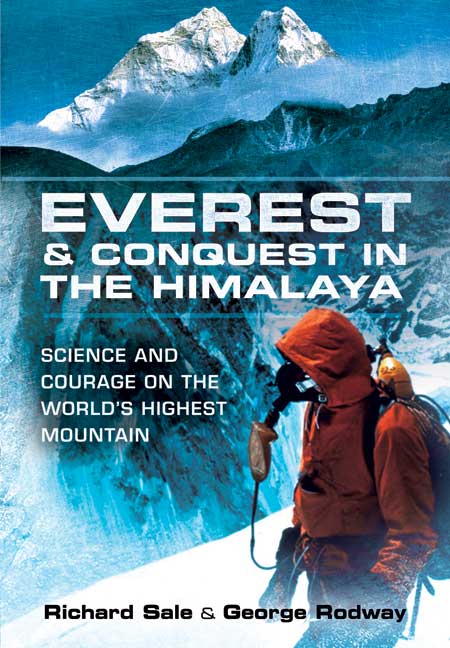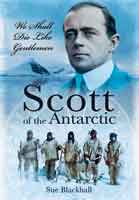Everest & the Conquest in the Himalaya (Hardback)
Science and Courage on the World's Highest Mountain
Imprint: Pen & Sword Discovery
Pages: 240
ISBN: 9781848841390
Published: 7th February 2011
(click here for international delivery rates)
Order within the next 7 hours, 58 minutes to get your order processed the next working day!
Need a currency converter? Check XE.com for live rates
| Other formats available - Buy the Hardback and get the eBook for free! | Price |
|---|---|
| Everest & the Conquest in the… ePub (8.0 MB) Add to Basket | £4.99 |
A century ago the summits of the world’s highest peaks, Everest included, were beyond reach. Pioneering attempts to overcome the dangers of climbing at extremely high altitudes ended in failure, sometimes with disastrous consequences. Yet today high-altitude ascents are frequent, almost commonplace. Everest can be conquered by relatively inexperienced mountaineers, and their exploits barely merit media attention – unless they go fatally wrong. In this fascinating study of the dramatic history of Everest climbs, Richard Sale and George Rodway describe in vivid detail the struggle to conquer the mountain and the advances in scientific knowledge that made the conquest possible. Their account gives a compelling insight into the science of mountaineering as well as the physical and psychological challenges faced by individuals who choose to test themselves in some of the harshest conditions on earth.
Dr George Rodway, an assistant professor at the University of Utah, is a physiologist, mountaineer and an expert on mountain medicine and the science of high-altitude climbs. As well as publishing many papers and articles on these subjects, he is the editor of George Ingle Finch’s The Struggle for Everest. He has also written extensively on the history of high-altitude physiology for journals such as High Altitude Medicine and Biology.
As featured in.
Bes Magazine
This history of mountaineering in the Himalaya recounts how advances in understanding of high-altitude physiology and in the development of equipment have allowed the frontiers of altitude to be pushed back from the humble beginnings in the late 1800's to where we are today. The authors' scientific and mountaineering background (Dr Sale is a physicist, mountaineer, and expert on the Arcticc, Dr Rodway is a physiologist, mountaineer, and expert on mountain medicine) stands them in good stead to provide a thorough examination of the topic. They have succeeded in the most part in maintaining an impartial viewpoint of events, presenting the facts and where these are disputed giving both sides of the story - a refreshing change from more biographic accounts of mountaineering expeditions.
Dr. Laura Ashfield, Johnson Matthey Technology Centre, Club Journal
The book takes the reader back to the first tentative steps along the way to the 8000 metre barrier - initially into pressure chambers and then on the ground-breaking expeditions of the early 1920's. The history of Himalayan ascents is followed from the first 'amusing-looking and eccentric' down jacket made with balloon fabric, through the golden age of the 1950s when one-by-one the summits were conquered, and to the first ascent of Everest without supplementary oxygen. Along the way we see how experiments led to improved knowledge of the effects of altitude on the human body and how improvements in equipment were key to expeditions' success. The text is supplemented with diagrams and photographs of, amongst other things, the many iterations that breathing apparatus underwent before it got to that which aspiring mountaineers now take for granted.
The modern era of high-altitude mountaineering is reached in the ominously entitled chapter "The Slippery Slope". The tone of the book alters here as changing climbing styles and attitudes to the mountains and fellow climbers are discussed. I can understand why the authors struggle to maintain their detached stance with these somewhat depressing topics.
The chapters are interspersed with boxes giving asides about a range of relevant topics and some of the key characters in the history of high altitude mountaineering, including, in addition to the usual suspects, some of the lesser known heroes who made important contributions to equipment design and understanding of the affects of altitude alongside their climbing achievements. References to the notes at the rear of the book are also well-worth the reader's attention, as in addition to a comprehensive list of sources the authors have added useful explanations and short biographies of people mentioned in the main text.
Although 'Everest & Conquest in the Himalaya' would be described as a scientific history, given the subject matter, it cannot avoid providing tales of daring-do throughout. From the high-altitude balloonists of the 1800s to modern day climbing epics, this book should appeal to anyone with an interest in the when, who, how, and why's of high-altitude mountaineering.
Achieving the impossible, shooting to the stars, conquering the unknown and pushing the boundaries further has always been the characteristics of human kind. When reading Sale and Rodway's book 'Everest & Conquest In The Himalaya' one can almost see the paramount sillouethe of K2, the second highest mountain of the world, with its snowy, misty and unreachable top, one can feel the freeze and breathe the suffocating thin air when climbing the stock, finally, one can feel the fear of death in face of tragedy mixed with the thrill of being the first to master this earthly 'god'. This exciting book offers not only the details of the struggle and the dangers faced by the pioneering mountaineers pursuing human dream in several famous expeditions to Everest but also a fascinating study of the advances in scientific knowledge supporting those few individuals determined to survive in one of the harshest environments on Earth. This thrilling book paying tribute to the immortal spirit of adventure and human strive for greatness will captivate your mind and allow you to see the challenges faced by high-altitude mountaineering.
MB (Customer Review)
An authoritative account of the history of mountaineering on Everest, Everest and Conquest in the Himalaya traces the evolution of the science and high-altitude climbing, analysing the world-famous expeditions of Mallory, Irvine, Hillary and Tenzing among others. A title that records the wondrous achievements and disastrous consequences of scaling the impossible.
How it Works Magazine, May 2011
This is a well written, well presented book with detailed facts on Everest’s chequered history and the flamboyant characters that it captivated. This book fills all gaps left by previous books, if you’ve never read a book on Everest before, start here.
Mark Garland, Mountain Instructor & International Mountain Leader
I have read many books on Everest over the years, but this book cleverly fills in all the gaps for anyone not lucky enough to have visited the massif or experienced the effects of high altitude mountaineering. It is a careful historical blend of the science and discovery surrounding everything from the early pioneering days through to the present. The book details all the early trials and experiments into understanding atmospheric pressure that cause all the high altitude related problems of altitude sickness, pulmonary oedema, cerebral oedema and their symptoms. These primitive and dangerous experiments on willing human volunteers often caused severe side effects and even death, but ultimately gave greater understanding about the higher regions and any advantage that may allow a successful summit bid. The book also covers a detailed catalogue of all the cartographers and mountaineers that have been enticed to Everest’s flanks, from its first crude but accurate measurements to the highly technical siege expeditions that followed. The early mountaineers that had been transfixed by the scale of the mountain and the thought of glory at such a conquest and the later athletes who endeavoured to climb alpine style, solo or without oxygen. For over a century, western men and women have been draw to Chomolungma (Mother Goddess of the Earth) to feel its magic. This book lists notable attempts, catastrophes and successes that have created the mysticism, magnetism and continued fascination with the Worlds highest mountain.
A fascinating read that has links all aspects of climbing that many previous books lack.
About George Rodway
Dr George Rodway, an assistant professor at the University of Utah, is a physiologist, mountaineer and an expert on mountain medicine and the science of high-altitude climbs. As well as publishing many papers and articles on these subjects, he is the editor of George Ingle Finch’s The Struggle for Everest. He has also written extensively on the history of high-altitude physiology for journals such as High Altitude Medicine and Biology.
About Richard Sale
Dr Richard Sale is a theoretical physicist, a mountaineer and an expert on the history and ecology of the Artic. He has travelled extensively in the Arctic, Antarctica and the Himalayas, and is a prolific author. His many books include On Top of the World, To the Ends of the Earth and The Arctic: The Complete Story.















